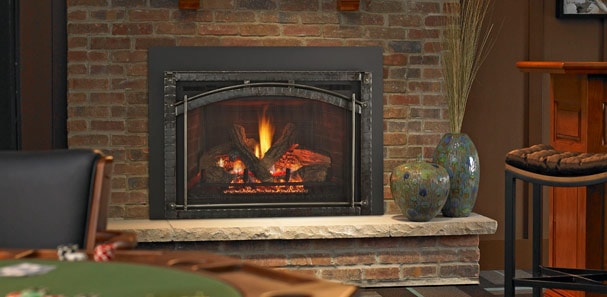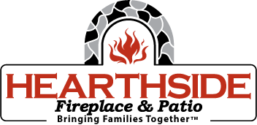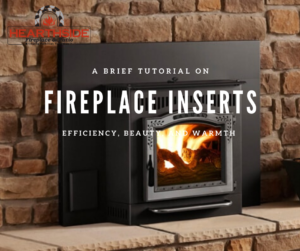Does your home have a masonry built, open-burning wood fireplaces? If so, you may wonder if you can improve the efficiency of your fireplace with a new insert. The answer is yes!
An insert is a great upgrade that will transform your wood fireplace into a beautiful heat producer. Here’s how. Masonry built wood fireplaces can exhaust as much as 24,000 cubic feet of air per hour to the outside, which in turn draws in cold air in through the home’s doors and windows. Because they are only -15 to +15 percent efficient, they are considered highly inefficient.
A fireplace insert fits directly into your existing fireplace, greatly enhancing its performance and beauty. There are three types of fireplace inserts – available in multiple designs and fuel types – each with distinct benefits.
Gas Fireplace Inserts
Operated by the flip of a switch or remote control, gas fireplace inserts burn natural gas or liquid propane, offering the greatest level of convenience. There’s no ash to clean up or need to feed the fire with wood. When used as zone heaters, direct vent gas fireplace inserts can pay for themselves in a matter of a few years.

Wood Fireplace Inserts
If you don’t want to part with the crackle and aroma of burning wood (understandably so), EPA-certified wood fireplace inserts are a smart choice. Because they have advanced combustion technologies, they’re among the most efficient wood-burning options available. Some units can heat for more than 10 hours on a single load of quality wood, while expelling minimal pollutants into the environment. And because they burn so completely, you’ll have minimal ash to clean up.
Pellet Fireplace Inserts
Pellet inserts are powerful heat sources if you’re tired of paying top dollar for heating with fossil fuels like fuel oil and propane. With state-of-the-art technologies, many have programmable thermostats that will adjust heat output to your liking. Pellet inserts produce very little ash to clean up and some units even have automatic cleaning cycles. Heating with pellets is a green choice, as pellets are a renewable and made from byproducts like sawdust and wood chips.
Coming up next in Part 2: Choosing the right insert for your home. Performance, installation, and fuel.

